As part of their subsistent farming operations, farmers in Himachal Pradesh have traditionally depended on organic farming methods. Consequently, the farming communities in low hills, valleys, and high mountains alike still maintain a rich pool of indigenous technological knowledge of organic agriculture practices. Much of this knowledge pertains to managing scarce resources to improve soil, fertility, soil moisture, irrigation, crop seeds, varieties, and mixed farming to cope with unpredictable climatic conditions.
However, institutional interventions focussing on agriculture development to improve farmers’ food and income security encouraged replacing these inorganic practices with organic options. Over the past decades, the diversification of farming to fruit farming, vegetable farming, and floriculture has significantly improved farming households’ food and farm incomes.
In addition, due to the program, small hill farmers have also established organic farming on marginal lands. Moreover, over the past decade, individual farmers, farmers groups, the department of agriculture, and the agriculture and horticulture Universities of the State have been engaged in some efforts towards organic agriculture.
Himachal Pradesh organic farming
Major crops in Himachal Pradesh
The impact of efforts from the last ten years by the farmers and institutions/ agencies is reflected in the number of schemes of the department of agriculture and other line agencies for promoting organic agriculture practices, advocacy programs on organic farming run by KVKs, and organic agriculture research program started by the Himachal Pradesh Krishi Vishvavidyalya (CSK HPKV).
To provide a platform for them, the state’s organic farmers have formed the Himachal organic farmer’s forum. It is engaged in organizing more and more farmers, discussing their problems, and promoting organic agriculture to help solve their farming concerns. The cash crops carry out the major portion of the revenue earned in the state’s economy in Himachal Pradesh. The chief food crops cultivated include wheat, maize, rice, barley, seed-potato, ginger, vegetables, vegetable seeds, mushrooms, chicory seeds, hops, olives, and figs.
Maize
Maize is the most essential food crop of the state, concentrated in rainfed areas. Kangra, Hamirpur, Mandi, Solan, Sirmaur, and Bilaspur districts are the main producers of maize, according to 63 percent of the production in the state. Regarding maize production, Himachal Pradesh ranks fifth behind Uttar Pradesh, Bihar, Punjab, and Rajasthan.
In case you missed it: Andhra Pradesh Organic Farming: For Vegetables, Herbs, Fruits, Millets, Crops, Livestock, and Aquaculture
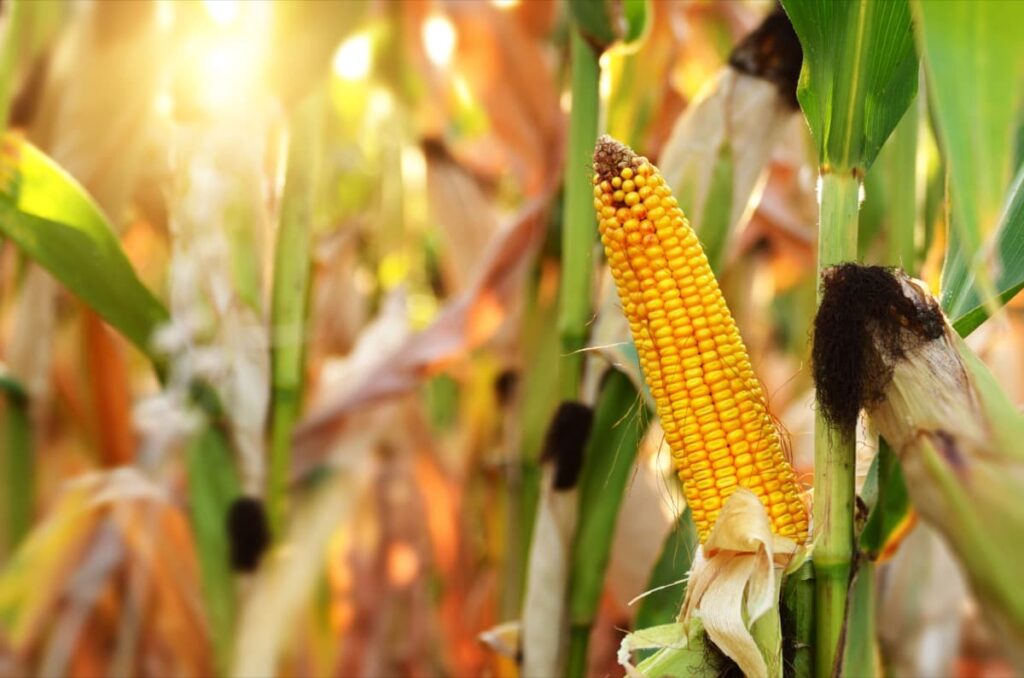
Wheat
Sirmaur, Sonan, Bilaspur, Hamirpur, Una, Mandi, and Kangra districts account for more than three-fourths of wheat production in the state. Some HYV introductions are RR-21, Kalyan Sona, and Sona Lika to increase wheat production. Wheat accounts for more than one-fourth of the total foodgrain production in the state. In 2020-21, 572.2 thousand hectares were occupied by wheat, and production was 601.0 thousand tons.
Rice
Rice is mainly grown in Kangra, Hamirpur, Mandi, Shimla, Bilaspur, Solan, and Sirmaur. The total area under rice crop in 2020-21 was 118.6 thousand hectares, and the total production for the same year was 178.1 thousand tonnes. The rice productivity in Himachal Pradesh is 1,128 kgs per hectare, more than the average of 1,094 kgs in all of India.
Potato
Large areas are under the cultivation of these lucrative cash crops. It was the introduction in Himachal Pradesh in the mid-forties when the import of seed potatoes was stopped from Burma and other countries due to the second World war. Himachal Pradesh produces different varieties of seed potatoes of very high quality. Therefore, it is called the ‘Home of Seed Potato.’ Potato is an important supplementary source of income for people of the state, including tribal areas, and plays a pivotal role in the state economy.
Organic vegetable farming in Himachal Pradesh
The entire Pangna village of the Karsog area in district Mandi has adopted organic farming. The women of approximately 20 families in the village are involved in vegetable production, for which they have formed self-help groups. Ghaini village of district Shimla is the first Panchayat where women have formed Village Organisation Himalaya Institute for growing organic vegetables.
In Ghaini Panchayat, eight self-help groups have been formed in Halot, Sanor, Chatyar, Jelidhar, Dayla, and Beyi villages. Around 120 farmers, including 80 women, are associated with organic farming in Tabhog, Bamot, Baag, etc., in Pahl Panchayat of Shimla district. Farmers in the state can produce off-season vegetables for sustainable income due to the agro-climate. Tobacco, cauliflower, cabbage, peas, and capsicum are the most important vegetables.
In case you missed it: Cabbage Farming Business Plan: How to Grow from Seed to Harvest
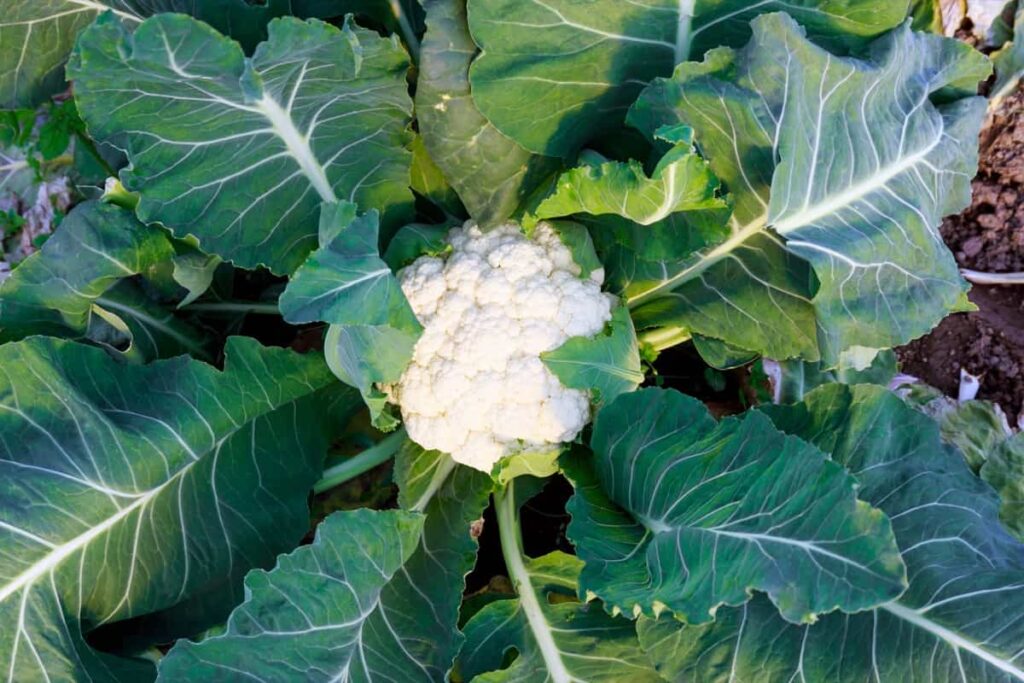
With an elevation range of 200-4,000 meters and a temperature range of 0-10°C (winter) and 15-30°C (summer), Himachal Pradesh’s agroclimatic conditions provide ample scope for cultivating various important crops. With a production of 1,01 lakh tonnes, Himachal Pradesh has an area under vegetables of 59,100 hectares. With technological intervention, the average productivity can be doubled from 17 tonnes per hectare to 29 tonnes per hectare.
| Vegetable | Areas growing in Himachal Pradesh | Organic crop yield per acre | Crop duration |
| Tomato | Lahaul & Spiti, Mandi, Shimla Solan, Sirmaur, and Kullu districts | 40-45 tons | 140-145 days |
| Cauliflower | Saproon valley in Solan, Bara Gaon at Katrain in Kulu, and the Pachhad area in Sirmaur | 32-48 tons | 60-150 days |
| Cabbage | Shimla, Kullu, Chamba, Kinnaur, and Spiti areas, Hamirpur and Kangra | 14-16 tons | 90-120 days |
| Pea | Matiyana, Shimla, Mashobra, Mandi | 3-5 tons | 75-80 days |
| Capsicum | Solan, Sirmaur, Kangra, Mandi and Shimla | 8-16 tons | 120-150 days |
| Ginger | Sirmaur, Solann, and Bilaspur districts |
Organic fruit farming in Himachal Pradesh
Himachal Pradesh, called the apple basket of the country, has earned quite a name for itself. Extensive plantations of apples on the higher hills of Shimla, Kullu, Manali, Mandi, and the slope of Kinnaur bring both fame and pride to the state, but they are not all that Himachal Pradesh houses. The state produces about 1 percent of India’s total fruit production of 889.77 lakh MT. However, in terms of total fruit production, the apple represents 83.14 % of the state’s total fruit production and 91.39% of its temperate fruit production.
In case you missed it: How to Grow Custard Apple in Pots: Soil, Propagation, Planting, and Care
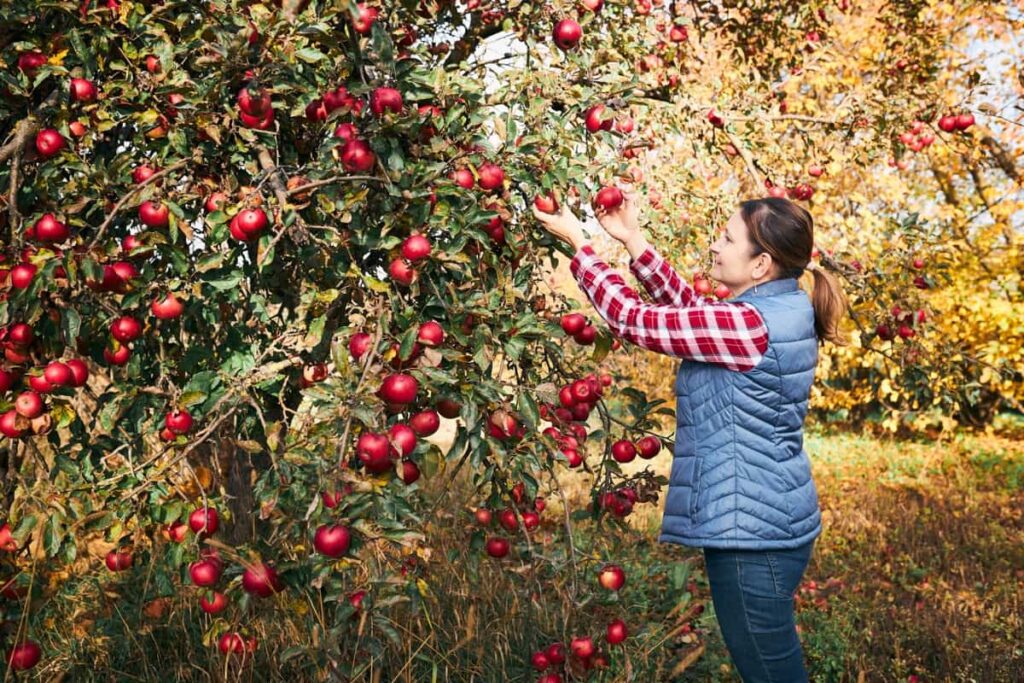
The state produces about 6.25 lakh MT of apples (2014-15), constituting 28.55% of the total apple production in the country. Shimla, Kangra, Mandi, and Kullu districts are the top fruit-growing districts, with 68.37 percent of the total area planted in fruit crops. On the other hand, the highest concentration of land under fruit crops has been reported in Kinnaur, Kullu, Shimla, and Lahaul districts.
| Fruit | Areas growing in Himachal Pradesh |
| Apple | Shimla, Rohru, Kullu, Manali, Kotgarh and Kotkhai |
| Galgal (Khate or Big-Lemon) | Hamirpur, Kangra, Mandi and Bilaspur |
| Kala Hisalu/ Kale Aakhe | Kullu, Manali, Kotgarh |
| Pear (Nashpati) | Shimla, Mandi and Kangra |
| Anjeer (Fig) | Shimla, Rohru, Kullu, Manali, Kotgarh and Kotkhai |
| Peach (Aadu) | Kullu, Manali, Kotgarh and Kotkhai |
| Kafal | Kangra, Mandi and Bilaspur |
| Apricot (Kubani) | Shimla, Kangra, Lahaul and Spiti |
| Pomegranate (Anaar) | Lower Belt of Kullu District |
| Loquat | Shimla, Rohru, Kullu, Manali, Kotgarh and Kotkhai |
Himachal Pradesh fruits horticulture zones
| Zone Descriptions | Valleys Elevation (m) | Fruits Crops |
| Low Hill and Plain Areas | 365-914 | Mango, Guava, Loquat, Citrus Fruit, Fig, Papaya, Grapes, Jack Fruit, Banana, Peach, Plum, and Pear |
| Mid Hills | 915-1523 | Stone Fruits (Peach, Plum, Almond, Apricot), Pear, Pomegranate, Kiwi Fruit and Strawberry, Walnut |
| High Hills and Valleys | 1524-2742 | Apple, Pear (Soft), Chestnut, Strawberry, Hazelnut, Almond, Cherry, Walnut |
| Cold and Dry Zone | 1524-3656 | Apples, Dry Apricots, Almond, Pistachios, Grapes, Hazelnut |
Organic herbs farming in Himachal Pradesh
The Centre will promote the cultivation and conservation of medicinal plants in five states and one Union Territory — Punjab, Haryana, Uttarakhand, Uttar Pradesh, Himachal Pradesh, and Chandigarh. Himachal Pradesh promotes the cultivation and conservation of medicinal plants by encouraging farmers to cultivate them. Under the National AYUSH Mission, the government is providing financial assistance for which farmer clusters have been set up. Each cluster must have at least two hectares of land to benefit from the financial assistance.
The National AYUSH Mission provides financial assistance of Rs 100 lakh for the cultivation of Atis, Kuth, Kutki, Sugandhvala, Ashwagandha, Sarpgandha, and Tulsi, besides Rs 40 lakh for the construction of two storage warehouses and two drying sheds. Himachal Pradesh has unique geographical conditions and areas ranging from 200 to 7,000 meters high. Due to the area’s diverse climatic conditions, numerous herbaceous plants are available here.
Una, Bilaspur, Hamirpur, Sirmaur, Kangra, Solan, and Mandi districts fall under the sub-tropical Shivalik hills, and about 160 medicinal plants are cultivated in this zone. Tribal districts like Kinnaur, Lahaul-Spiti, and Kullu, some areas of Kangra and Shimla’s districts located at an altitude of over 2,500 meters produce helpful medicinal plants. These plants include patis, batsnabh, atis, tragen, kirmala, ratanjot, kala jeera, kesar, somlata, jangli heeng and khursani ajwain.
The state has set up herbal gardens in Joginder Nagar in Mandi district, Neri in Hamirpur district, Rohru in Shimla district, and Jungle Jhalera in Bilaspur district. Various medicinal plants are grown in these herbal gardens, catering to agro-climatic zones. In addition, the National Medicinal Plants Board of the Ministry of Ayush has established regional-cum-facilitation center of the northern region at the Research Institute in Indian Systems of Medicine in Joginder Nagar.
Organic millet farming in Himachal Pradesh
In Himachal Pradesh, farmers rely on rain-fed agriculture for their livelihood, as 81% of the cultivated area is rained, making the farmers more vulnerable. Traditional crops, millets, pseudocereals, and other lesser-known crops, have been known as staple food grain crops to humans for thousands of years. These crops have remained an essential component of cropping systems in rain-fed areas, supporting millions living in difficult hill-mountain ecosystems.
They have wider adaptability due to endurance to drought and poor soil fertility, high nutritional and medicinal value, and resilience to biotic and abiotic stresses. However, the area under traditional crops has declined despite their rich nutritional value. But now, the cultivation of these crops is again gaining momentum owing to their nutraceutical superiority in comparison to fine cereals and considering their importance. Therefore, they should be popularised among the farmers of the state.
In case you missed it: Andhra Pradesh Organic Farming: For Vegetables, Herbs, Fruits, Millets, Crops, Livestock, and Aquaculture
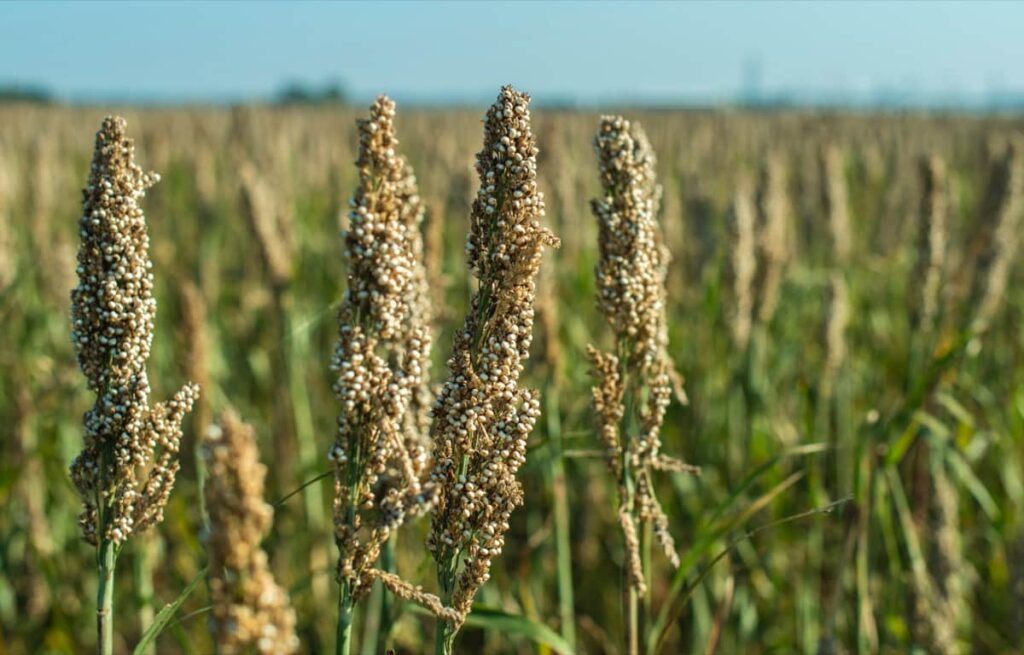
The government has increased millet production from 14.52 million tonnes in 2015-16 to 17.96 million tonnes in 2020-21. Bajra production increased from 8.07 million tonnes to 10.86 million tonnes during the same period. The Himachal government promotes the cultivation of millets and Bajra as part of the Rashtriya Krishi Vikas Yojana – Remunerative Approaches to Agriculture and Allied Sector Rejuvenation (RKVY-RAFTAAR).
| Millet | Areas growing in Himachal Pradesh |
| Finger millet (Ragi) | Shimla, Kullu, Sirmaur, Solan, Chamba, Kangra, Mandi, Lahaul -Spiti and Kinnaur districts of the state |
| Barnyard millet (Jhangora) | Sirmaur, Shimla, and Kinnaur districts of the state |
| Proso or common millet (Barri) | Kinnaur, Shimla, Kangra, Sirmaur, Chamba, Mandi, and Kullu districts of the state |
| Foxtail/ Italian millet (Kangni) | Kinnaur, Lahaul- Spiti, Chamba, Shimla, Solan, Kangra, Kullu, Mandi, and Sirmaur districts of the state |
| Sorghum (Jowar) | Hamirpur, Nurpur (Kangra), Paonta(Sirmaur), Bilaspur, Una, Shimla, Mandi, and Solan districts of the state |
| Pearl millet (Bajra) | Shimla, Kinnaur, Kullu, Mandi, Kangra (Bhanghal area), Lahaul Spiti, and Chamba districts of the state |
Organic livestock farming in Himachal Pradesh
To improve the quality of sheep and wool, Government Sheep Breeding Farms at Jeori (Shimla), Sarol (Chamba), Tal (Hamirpur), and Karachham (Kinnaur) are supplying improved sheep to the breeders of the state. One Ram center at Nagwain in District Mandi is also functioning, where improved Rams are reared and supplied to breeders for cross-breeding. 9 Sheep and wool Extension Centres continue functioning. During 2017-18, the wool production is likely to be of the order of 1,500 tons.
In addition, angora rabbit farms are functioning at Kandwari (Kangra) and Nagwain (Mandi) to distribute rabbits to the breeders. Dairy production is integral to Animal Husbandry and forms part of the earnings of small and marginal farmers in Himachal Pradesh. The recent trend towards developing a market-oriented economy emphasized the importance of milk production, especially in areas near urban consumption centers. This has motivated farmers to replace local non-descript breeds of cows with cross-breed cows.
In case you missed it: Andhra Pradesh Organic Farming: For Vegetables, Herbs, Fruits, Millets, Crops, Livestock, and Aquaculture
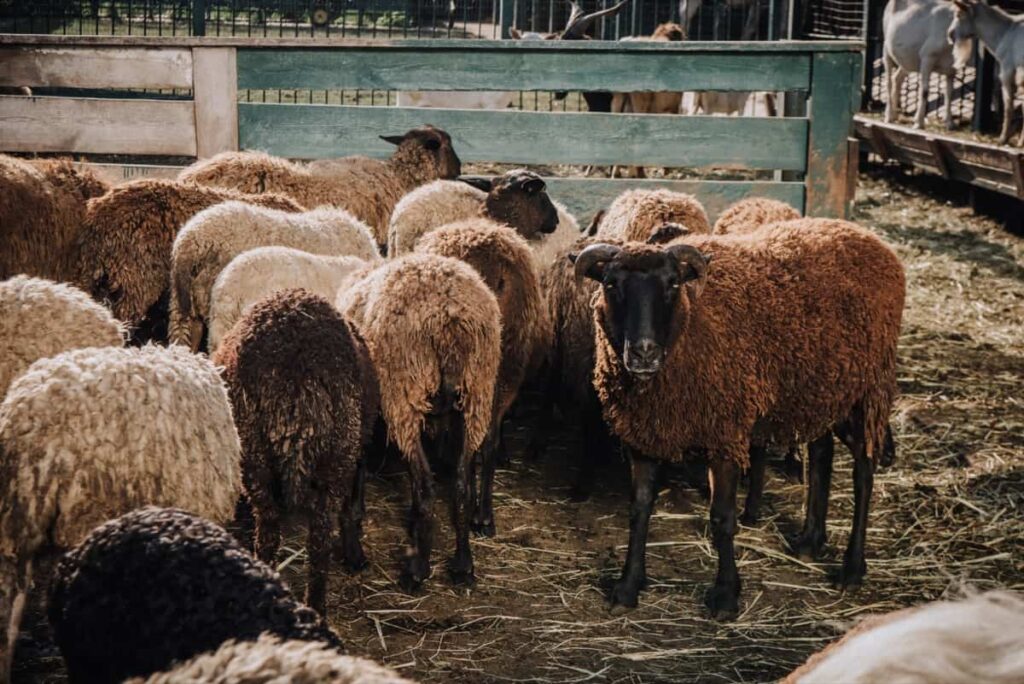
The upgradation of indigenous cattle is being upgraded by cross-breeding with Jersey and Holsten. In buffalo, upgradation with Murral bull is being popularized. Cross-breed cows are preferred for longer lactation, shorter dry periods, and higher yields. During 2017-18 the “Uttam Pashu Puraskar Yojna” will be implemented with the provision of `20.00 lakh, and funds to the tune of `30.00 lahks have been provided for the organization of “Animal Mandis at the Districts and Block level.
The Doodh Ganga Yojana, started by the animal husbandry department, is executed through NABARD along with support from district administration, the milk federation of Himachal Pradesh, and other banks. NABARD has been supporting the collection, preservation, and processing of milk. In addition, NABARD assists self-help groups in forming their federations to procure milk and process it. The components of the scheme include:
- Establishment of small dairy units that have up to 10 animals,
- Rearing of heifer calves,
- Vamin-compost (with milch animal units),
- Purchase of milking machines, milko-tester (milk analyzer), bulk milk cooling units to 2000 liter capacity, up
- Purchase of dairy processing equipment for manufacturing indigenous milk products,
- Establishment of dairy products,
- Transportation facilities and cold chains, cold storage facilities for milk and milk products,
- Establishment of private veterinary clinics and
- Dairy marketing parlors.
Benefits
- The scheme gives up to rupees15 lakh loan for setting up machines and coolers for milk production and conservation.
- A loan of 25 lahks is availed for transporting dairy products under the scheme.
- Ranging from rupees 1.2 lahks to 4.8 lahks are given for purchasing cattle and setting up husbandry ventures.
Organic aquaculture farming in Himachal Pradesh
Himachal Pradesh has been gifted by mother nature with rivers emanating from glaciers that traverse through hilly terrains and finally enrich the semi-plain area of the state with their oxygen-rich water. Its linearly flowing rivers, Beas, Satluj, and Ravi, receive many streams during their downward journey. As a result, they harbor precious cold water fish fauna such as Schizothorax, Golden Mahseer, and exotic Trout.
Cold water resources of the state have shown their potential with the successful completion of the ambitious Indo-Norwegian Trout farming Project and the tremendous interest shown by the hill populace for adopting evolved technology. Himachal Pradesh will start land-based fish farming using recirculation aquaculture systems (RAS) technology under the Pradhan Mantri Matsya Sampada Yojana (PMMSY) to raise different varieties of fish throughout the year.
In case you missed it: Shrimp Farming Business Plan: Every Aqua Farmer Should Know Before Getting Started
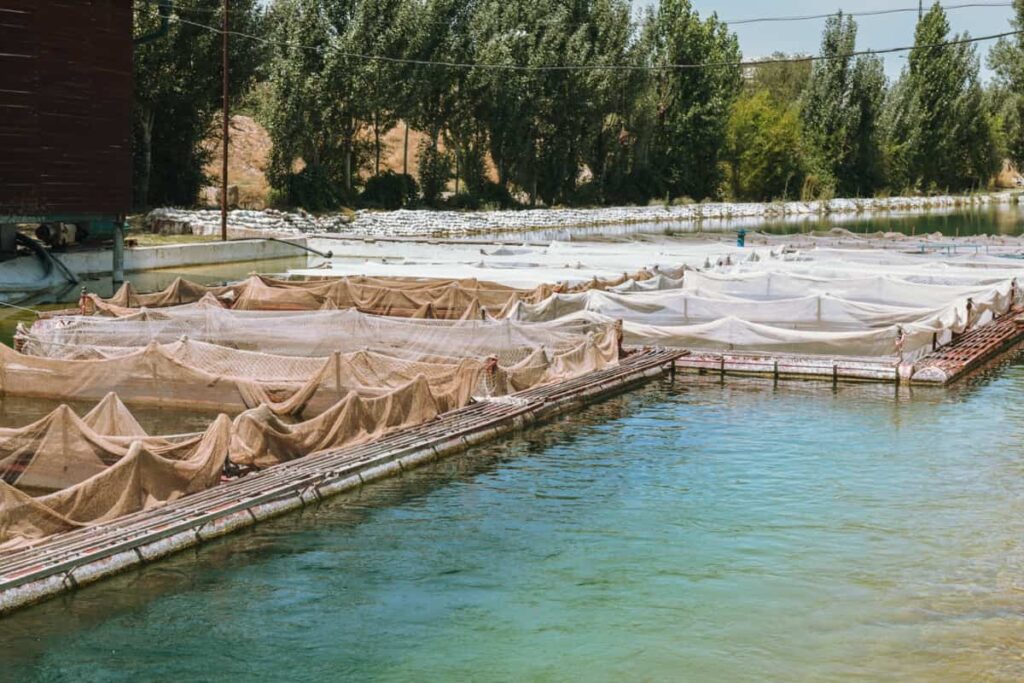
The state will set up 15 fish ponds in five years. The new fish farms will help farmers raise varieties of fish throughout the year using lesser water and producing a higher yield. Five of the proposed 15 farms will be set up in available waters in Una, Mandi, Kangra, and Sirmaur districts, and 10 in cold water fisheries in Kinnaur, Sirmaur, Shimla, Mandi, Chamba, and Kullu districts.
When all 15 farms are operationalized, approximately 270-tonne fish is expected to be produced annually. The state government is providing incentives to the private sector for setting up fish farms under which financial assistance at the rate of 40 percent to the general category and 60 percent to the SC/ST/women of the total unit cost will be provided to entrepreneurs.
How to get organic certification in Himachal Pradesh
Any conventional farm using chemical fertilizers and pesticides shall have a conversion period of three years before issuing an organic certificate. An organic certificate shall be issued at the end of the first year of registration in any farm where organic management has been practiced for more than three years. However, a third-party declaration needs to be submitted along with the application. The third party shall not have any personal relationship with the operator.
- Organic farming certificates can be granted to farmers, groups of processors, and traders who adhere to the NPOP (National Programme for Organic Production) standards.
- As specified by the NPOP (National Programme for Organic Production), they must apply in the required format and pay a fee.
- The Global Certification Society (GCS) has provided the general standards for organic crop production, which are available on its website.
- The operator can make a call or send an email for a request for certification.
- An Organic Crop Producer (Individual Grower) or a Grower Group (A group of small farmers) is required to get registered with the Global Certification Society (GCS). Based on your request, the (GCS) shall supply a set of the application packet.
- Once they receive the complete documents, they will review them based on applicable standards.
- They will contact you if any incomplete information/non-compliance is noticed or additional information is needed.
- Once the required information is gathered or non-compliance is over, an on-site audit is planned on a mutually agreed date and time. This application review usually takes about a couple of days, based on the information provided by the applicant.
- On the prescribed date, a trained Organic Inspector, familiar with the type of operation, will reach the operation site (area). The inspector will thoroughly examine each process and document of your operation for verification and compliance with the required standards.
- The inspection takes typically half a day to 3 days depending upon the complexity of operations.
- After the inspector’s report is received, it is reviewed to evaluate compliance with the applicable standards. During the Secondary Review, they will contact you if more information is required. After receiving a report from the inspector, the Secondary Review generally takes 2-4 days.
- After completion of the Secondary Review, the file is sent for the final decision, which takes 1-2 weeks.
- After making the final decision, you will receive your Organic certificate and a cover letter citing the conditions for awarding the certificate.
- The Organic certificate contains the name of your company/group, address, certification category, and list of certified organic products.
In case you missed it: Top 15 Agritech Startups Helping Farmers in India: Smart Farming for High Yields and Low Pests and Disease
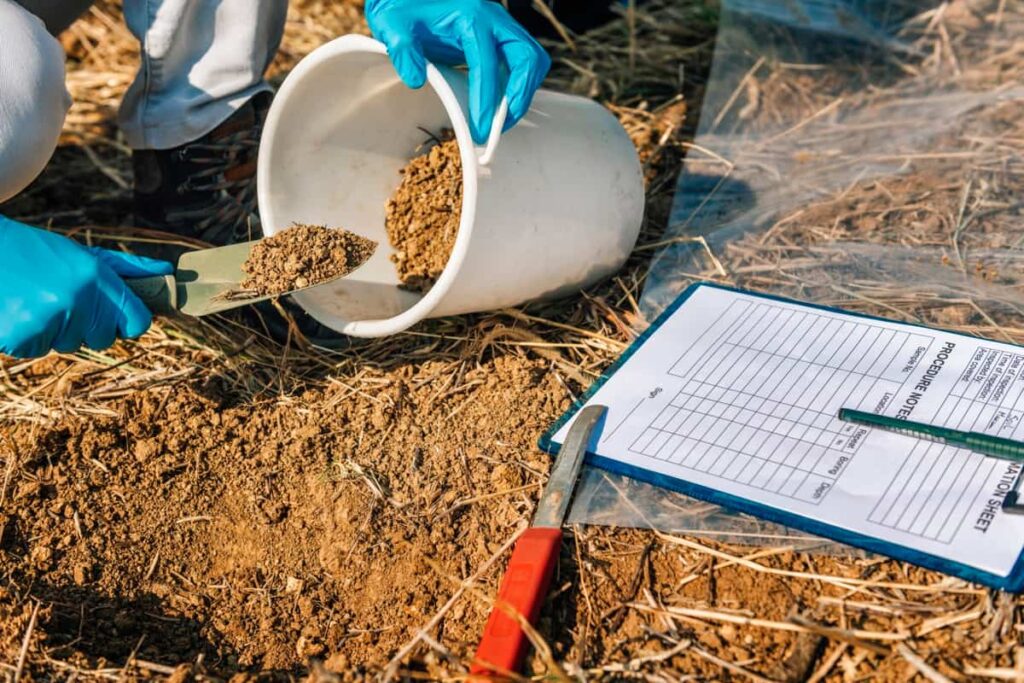
Conclusion
In the next five years, the state government aims to transform Himachal Pradesh into an organic farming state. Currently, 39,790 farmers covering 21,473 hectares have switched to organic farming to produce healthy food grains that are chemical-free. NGOs, farmer societies, and agencies working in natural farming will also be involved in organic farming promotion and certification. In addition, mass awareness programs and ‘Kisan Goshtis’ are organized by the department and district units up to block levels to educate the farmers.
- Profitable Village Farming Business Ideas in 2024
- High-Yield Aquaculture: Fast-Growing Fish for Farming
- Effective Fish Pond Construction Techniques for Beginners
- Irrigation and Water Management in Pineapple Farming
- Blossom to Harvest: Mastering Flowering and Pollination in Papaya Farming
- Pig Fattening Essentials: From Selection to Sale for Beginners
- Raising Wagyu Cattle: A Complete Guide for Premium Beef Production
- Soil Types and Their Water Holding Capacity
- Optimizing Irrigation Schedules for Coconut Groves for Enhanced Yield
- Espresso Your Garden: Coffee Grounds for Healthier Acid-Loving Plants
- The Best Soil Mix for Snake Plants: How to Mix Your Own Snake Plant Soil
- Green Thumb Success: Expert Tips for Cultivating Greenhouse Beans All Year Round
- Bloom All Year Round: The Ultimate Guide to Indoor Hyacinth Care
- Eco-Friendly Gardening: How to Make Liquid Fertilizer from Kitchen Waste
- Ultimate Guide to Grow Anise in Pots: Explore Seed Propagation to Harvesting
- Guide to Raising Chester White Pigs: Discover Breed Facts to Growth Management
- Mastering the Elegance: The Ultimate Guide to Weeping Cherry Tree Care, Planting, and Maintenance
- Ultimate Guide to Planting Garlic in Grow Bags: Growing Strategies for Beginners
- How to Fix Spider Plant Leaf-Related Problems: Natural and Organic Remedies
- 10 Reasons Why Your Tulsi Plant is Shedding Leaves: Home Remedies and Solutions
- Optimizing Growth and Yield: The Advantages of Palm Bunch Ash Fertilizer
- Utilizing Neem Oil Extract as a Natural Pesticide for Hydrangea
- From Soil to Harvest: Various Ways in Which Farmers Can Use AI Tools
- Steps to Encourage and Induce Citrus Flowers: A Comprehensive Guide
- How to Fix Snake Plant Leaf-Related Issues: Natural and Organic Remedies
- Transform Your Garden into a Fragrant Oasis with Raat Ki Rani (Night Blooming Jasmine)
- Discover the Ideal Chicken Breeds for Philippine Farms
- How to Create a Poultry Egg Farm Business Plan for Profits
- Grow Lemon Cucumbers Like a Pro: Insider Techniques for Bountiful Yields
- Ultimate Guide to Caring for Your Pink Princess Philodendron: Tips for Thriving Variegation
- Areca Nut Profit Per Acre: Calculating Yield and Cost of Cultivation
- How Kaveri Chicken is Becoming a More Profitable Breed in Indian Backyards
- Transform Your Barn: 9 Steps to Convert a Horse Stall into a Chicken Coop
- Exploring Suffolk Sheep Disadvantages with Limitations and Challenges
- Guide to Solving Potted Lemon Tree Problems: How to Revive Lemon Tree in Containers
- Steps to Encourage Female Pumpkin Flowers: Best Strategies for More Flowers and High Yields
